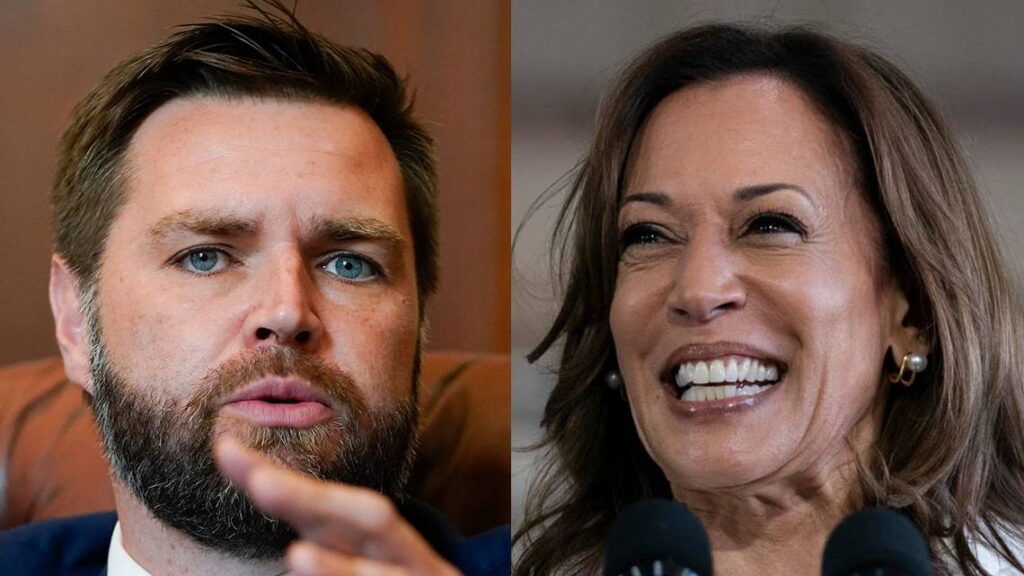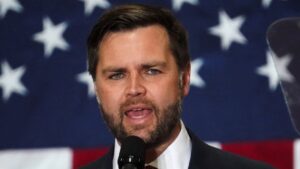
Introduction to JD Vance and Eyeliner Culture
J.D. Vance, a significant figure in contemporary American politics, has garnered attention not only for his political acumen but also for his unique approach to personal expression. As a venture capitalist and author of the bestselling memoir “Hillbilly Elegy,” Vance’s insights into American life resonate deeply with diverse audiences. His role in political discourse highlights how personal narratives and experiences shape political identities. Within the complex tapestry of modern politics, personal expression—often manifested in beauty trends—plays a crucial role in how public figures are perceived and how they relate to their constituents.
The intersection of politics and personal expression gains particular relevance when considering makeup trends like eyeliner. The choice of eyeliner, a simple yet impactful beauty product, often transcends its cosmetic function, serving as a form of personal branding and identity. For many public figures, how they choose to present themselves visually can influence their public image and perception. Eyeliner, in this context, becomes not just a beauty choice but a medium through which individuals communicate their personal style and, by extension, their political messages.
This dynamic between style and politics is significant, particularly for figures like Vance, whose political narrative is intertwined with his personal story. As he navigates the complexities of the political landscape, understanding how personal grooming choices, such as the use of eyeliner, contribute to a broader cultural dialogue is essential. By exploring these themes, readers will gain a deeper insight into how J.D. Vance’s interactions with beauty trends reflect his political persona and resonate within the larger framework of American politics. Such an exploration sets the stage for understanding the intricate relationship between public perception and personal expression as illustrated by Vance’s journey.
The Significance of Eyeliner in Personal Branding
In the realm of personal branding, makeup choices, including eyeliner, serve as powerful tools for self-expression and identity communication. For public figures, particularly politicians like JD Vance, these choices can significantly shape public perception and communicate underlying messages. Eyeliner, as an expressive cosmetic, has the capacity to elicit impressions of reliability, strength, or approachability, which are essential qualities for political figures seeking to connect with their constituents.
Across various platforms, the way public figures present themselves physically can enhance their political message, and eyeliner often plays an integral role in this visual strategy. For instance, a bold eyeliner look may convey confidence and assertiveness, suggesting that a politician is strong and decisive. Conversely, softer, more subtle eyeliner styles can reflect a sense of warmth and accessibility, traits that help establish personal rapport with the audience. The strategic use of eyeliner can contribute to creating an image that resonates with voters and aligns with the desired political persona.
By adopting a distinctive eyeliner style, JD Vance could leverage this aspect of his appearance to communicate aspects of his identity, thus reinforcing his political brand. This visual statement may serve as an extension of his values and beliefs, merging personal expression with political messaging. As voters become more visually attuned to signals in personal branding, an awareness of these aesthetic choices can enhance their engagement with the candidate’s persona. Ultimately, the significance of eyeliner extends beyond beauty; it embodies a nuanced component in the multifaceted world of political representation, where every detail counts toward shaping an impactful identity.
Cultural Implications of Makeup in Politics
The intersection of makeup, particularly eyeliner, and politics has been a topic of significant discussion, reflecting broader cultural implications and societal norms. Historically, makeup has been perceived in varying ways, often influenced by prevailing gender expectations. In many cultures, makeup is equated with femininity, beauty, and sometimes, a portrayal of power. Yet, its role in politics has often been contentious, with political figures frequently scrutinized for their personal grooming choices.

Throughout history, female politicians have faced intense scrutiny regarding their appearance, with makeup often being interpreted as a diversion from their political competencies. For instance, in the early 20th century, women’s makeup was largely viewed with skepticism and considered unprofessional. Conversely, as more women entered politics, makeup began to serve as a tool for self-expression and a means for politicians to convey authority, confidence, and relatability. Eye makeup, such as eyeliner, has played a crucial role in this transformation, allowing individuals to project their personalities while engaging in the political landscape.
JD Vance’s choices in relation to makeup, including eyeliner, highlight the evolving dynamic between personal expression and public perception within politics. By choosing to embrace or eschew traditional norms related to appearance, he exemplifies a shift in how politicians can navigate conversations around gender and societal expectations. The discussions surrounding the JD Vance eyeliner reveal that such choices are no longer solely about aesthetics; they can either reinforce or challenge established political norms. As societal views on makeup continue to evolve, it’s evident that the incorporation of eyeliner and other cosmetics into political discourse will remain a reflective aspect of contemporary culture.
JD Vance’s Eyeliner: Analysis and Public Reception
JD Vance, a significant figure in contemporary American politics, has garnered attention not only for his political views but also for his personal grooming choices, particularly his use of eyeliner. In a series of public appearances, Vance has subtly incorporated eyeliner into his look, prompting discussions about its implications in a political landscape often perceived as rigidly gendered. Vance’s eyeliner serves as a fascinating case study in the intersection of personal expression and political identity.
During various campaign events and media engagements, Vance’s choice to wear eyeliner has been both praised and criticized. Supporters argue that it showcases his authenticity and willingness to break traditional gender norms often associated with political candidates. This choice resonates with a growing movement within society that embraces individualistic expression, blurring the lines of conventional masculinity and femininity. Furthermore, Vance’s public statements suggest an awareness of his image, hinting at a strategic approach to utilizing personal aesthetics as a means of engagement with a broader audience.
Critics, on the other hand, have utilized Vance’s personal grooming choices to question his political credibility, often framing his eyeliner usage as an act of superficiality. Such a response highlights underlying societal tensions surrounding masculinity in politics. It reflects a broader dialogue about how grooming and fashion can influence public perception, impacting a politician’s image and electoral success. The polarized reactions emphasize the complex nature of Vance’s persona; he becomes a vessel for both critique and admiration, illustrating the diverse values held by constituents.
Ultimately, JD Vance’s eyeliner embodies more than personal preference; it represents a societal shift towards a more nuanced understanding of identity. As politics becomes increasingly intertwined with individual expression, discussions surrounding figures like Vance will prompt deeper reflections on the role of aesthetics in the public sphere. This phenomenon invites contemplation on how appearances can redefine political landscapes, leaving an indelible mark on both voter perceptions and personal identity narratives.



